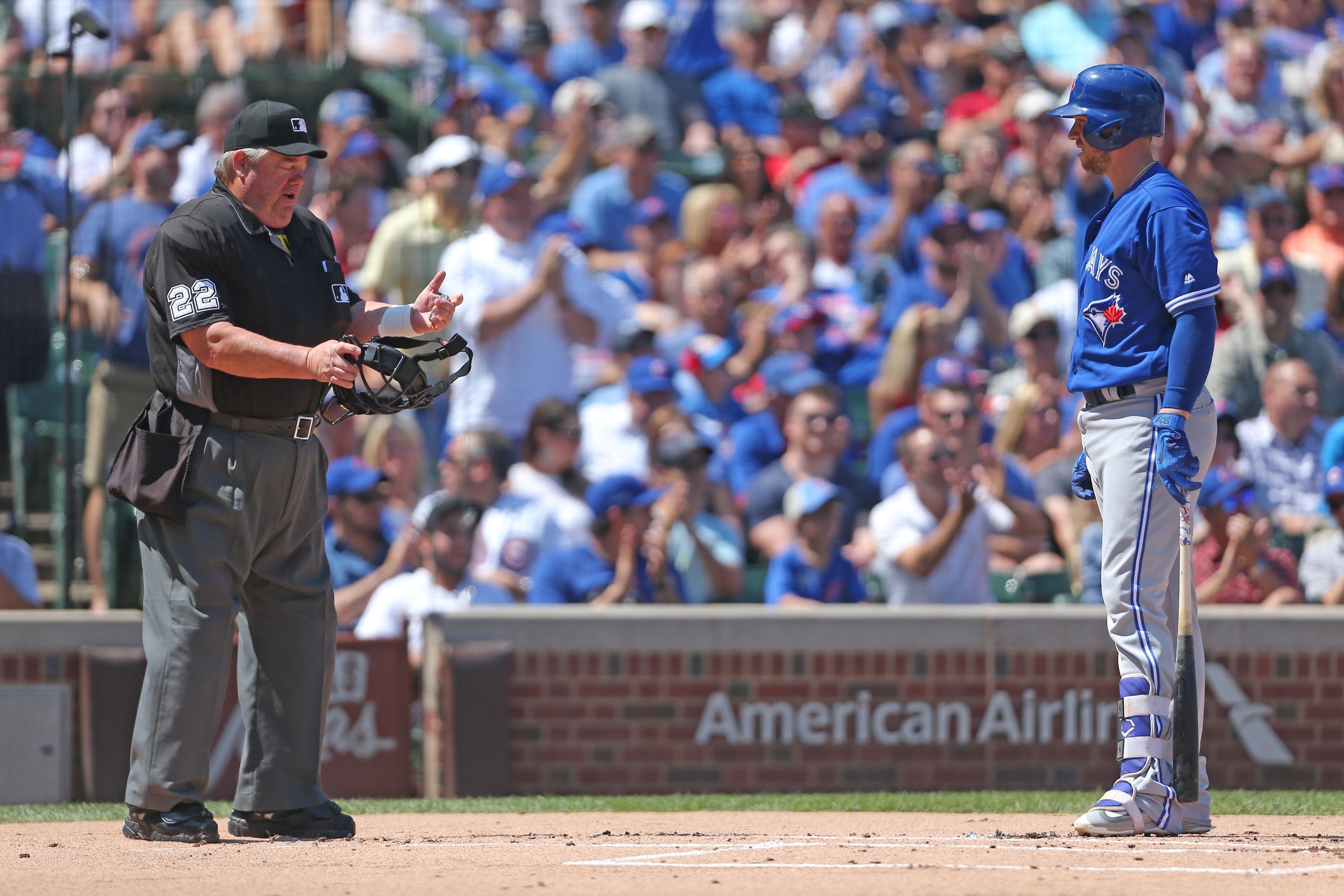Fans for a few years now have been debating bringing automated strike zones, or robot umps, or whatever you want to call it. But it feels like after the egregiously, hilariously bad call on Ben Zobrist last Saturday night it feels like for the first time the debate has come to baseball itself. Players and managers were talking about it alike for the rest of the weekend, and there’s reportedly a swell of players who haven’t spoken up yet who would be all for it.
Perhaps it’s the fact that it was a player like Zobrist to get it out into the light. First off, we know Zobrist has a great handle on the strike zone. He’s been one of the most disciplined hitters in the league for the better part of a decade. Second, he’s not prone to popping off in the press. He’s not prone to saying much at all of any consequence, really. So when he feels the need to talk about it, you know it’s something that’s been discussed among the players and for a while.
There have always been arguments against it. One of them makes sense, and one of them doesn’t. The latter one is “the human element.” This has been a favorite topic of mine, because of how ludicrous I think the idea of “human element” is. Essentially what anyone using this argument is saying is that they like mistakes. They like that the rules of the game are sometimes not implemented correctly. Which is obviously ridiculous on its surface. We all like to debate bad calls I guess, but I know I wouldn’t be any less happy if there were less, or none, of them. It’s a cop out at best.
The second argument of course is that technology isn’t quite ready for this, and that’s one you have to take more seriously. This article by Ryan Davis and along with Harry Pavlidis explains why. I tend to buy this one a little more than “the human element,” but I wonder how off it really is. If the margin of error is an inch or two, isn’t that something we’re willing to take right now? No one seems to have a clear number, but most numbers I see say that umps get about 85 percent of the pitches right. Considering how much one pitch can matter in a game or series, do we really think that’s good enough? Pavlidis says machines wouldn’t do any better. I wonder.
But let’s face it. This is coming. Now that the players are discussing it in the press and baseball insiders are reporting on a bigger undercurrent of a push to this, it will happen. And it needs to. Because let’s face it, the task is simply too hard. As good as these umps are, and they are, judging where a baseball passed a plane about four feet in front of you while traveling anywhere from 80-95 MPH and with various break on it is basically impossible. Just because this is the way we’ve always done it doesn’t mean it has to stay that way. The tech is there.
Even if the 85 percent figure is what we would be stuck with, it would be a consistent 85 percent. Players now have to deal with varying zones from ump to ump, and sometimes count to count. With the automated zones, hitters will know every night what is and what isn’t a strike. Sure, the zone might actually end up bigger than we think because any pitch that even scrapes the borders of the zone would be called a strike, and that’s a lot of pitches. But it would be standardized.
Sure, there are things to be figured out, like when the zone is set. But that seems easy enough, doesn’t it? There’s simply a better way. We know how this works of course. It won’t happen until an obvious pitch is blown late in a World Series that shifts a series one way or the other. Sure, there was already Livan Hernandez but we didn’t have the tech then we do now.
This is coming. Why wait?
Lead photo courtesy Dennis Wierzbicki—USA Today Sports

Excellent. The numbers I saw were that only 64% of borderline calls were “wrong” and that current tech in tests with realtime feed to umps would get that to 85%. I didn’t hear what the overall numbers would be.
The argument I hear most often is that, “a bad call can also help your team so it evens out in the end.” I’m not sure how the actual distribution of those errors would pan out but it (to me) ignores the biggest issue. Consistency of expectation for both batters and pitchers. How many pitchers have gone “off the rails” after they get two successive in zone strikes called as balls – which then alters their approach not just to the remaining pitches for that batter – but for the entire side. Obviously this impacts his effectiveness with pitch counts as well. It’s a disservice to let a human interfere with the potential of his work.
Same is true for batters but ESPECIALLY developing batters. Who knows how many marginal farm kids were sent back down because the roll of the inconsistent pitch calling.
I understand MLB is slow to move but hopefully this latest resurgence will at least get some implementation at developmental ball if not A ball.
I suspect the real issue here isn’t MLB as much as it is the umpires union. They already have a severe lack of transparency and accountability to MLB and owners (much less players). But that I’m sure is a subject for another time..
Just rereading my comment. The numbers I heard were that 64% of borderline calls were called correctly. (36% wrong).